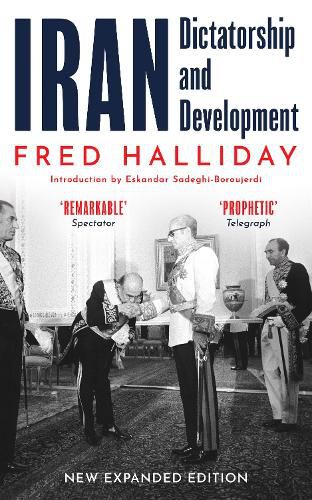Readings Newsletter
Become a Readings Member to make your shopping experience even easier.
Sign in or sign up for free!
You’re not far away from qualifying for FREE standard shipping within Australia
You’ve qualified for FREE standard shipping within Australia
The cart is loading…






It is quite possible that before too long the Iranian people will chase the Pahlavi dictator and his associates from power...
So wrote historian Fred Halliday in the conclusion to this prescient work on Iran in the twentieth century. Just months later the revolution of 1979 saw Shah Reza Pahlavi ousted and an Islamic theocracy established under Ayatollah Khomeini.
Following a contextual study of the origins of the Iranian state, Halliday focuses on the period from the early 1960s to 1978, when protests swept the nation for the first time in fifteen years. Through an interdisciplinary approach, he assesses the economic, social and political conditions, taking in the nation's uneven capitalist development, opposition movements and state repression, and the alliance between the Shah and the United States. Even three decades on, this classic study - unique in its proximity to the revolution - offers many insights into why and how the Shah's reign came to an end.
$9.00 standard shipping within Australia
FREE standard shipping within Australia for orders over $100.00
Express & International shipping calculated at checkout
It is quite possible that before too long the Iranian people will chase the Pahlavi dictator and his associates from power...
So wrote historian Fred Halliday in the conclusion to this prescient work on Iran in the twentieth century. Just months later the revolution of 1979 saw Shah Reza Pahlavi ousted and an Islamic theocracy established under Ayatollah Khomeini.
Following a contextual study of the origins of the Iranian state, Halliday focuses on the period from the early 1960s to 1978, when protests swept the nation for the first time in fifteen years. Through an interdisciplinary approach, he assesses the economic, social and political conditions, taking in the nation's uneven capitalist development, opposition movements and state repression, and the alliance between the Shah and the United States. Even three decades on, this classic study - unique in its proximity to the revolution - offers many insights into why and how the Shah's reign came to an end.